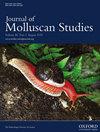Variability in the white spot: a new genus and species of Discodorididae (Nudibranchia) from the central and western Pacific Ocean
IF 1.2
4区 生物学
Q2 MARINE & FRESHWATER BIOLOGY
引用次数: 0
Abstract
In this paper, a new genus in the nudibranch family Discodorididae, Avaldesia n. gen., is established for Avaldesia albomacula (Chan & Gosliner, 2007) and Avaldesia tahala (Chan & Gosliner, 2007), originally assigned to the genus Thordisa Bergh, 1877, and a new species, Avaldesia tamatoa n. sp., described here from the central Pacific. To establish species relationships within Avaldesia, as well as the placement of Avaldesia within Discodorididae, we utilized four molecular markers (cytochrome c oxidase subunit I, 16S rRNA, histone H3 and 28S rRNA) in our Bayesian inference and maximum likelihood analyses. Four species delimitation methods were complemented by morphological dissections and scanning electron microscopy. Our results reveal a clear separation between Avaldesia and Thordisa and suggest that Avaldesia is more closely related to the genera Hoplodoris Bergh, 1880 and Asteronotus Ehrenberg, 1831. The most characteristic features of Avaldesia include a radula with increasing denticulation towards the fimbriate outermost laterals and a reproductive system with a lobate vestibular gland, occasional hollow vestibular spine and a penis armed with one or more penial spines. All species of Avaldesia are found in shallow water (5–10 m depth) on rocky reefs, sandy sediments and algal fields with distributions across the Indo-Pacific.白斑的变异性:来自太平洋中部和西部的 Discodorididae(裸鳃纲)新属和新种
本文建立了裸鳃亚纲 Discodorididae 科的一个新属 Avaldesia n. gen., 即 Avaldesia albomacula (Chan & Gosliner, 2007) 和 Avaldesia tahala (Chan & Gosliner, 2007),它们最初被归入 Thordisa Bergh, 1877 属,本文还描述了来自太平洋中部的一个新种 Avaldesia tamatoa n. sp.。为了确定 Avaldesia 的物种关系以及 Avaldesia 在 Discodorididae 中的位置,我们在贝叶斯推断和最大似然分析中使用了四个分子标记(细胞色素 c 氧化酶亚单位 I、16S rRNA、组蛋白 H3 和 28S rRNA)。形态学解剖和扫描电子显微镜对四种物种划分方法进行了补充。我们的研究结果表明,Avaldesia 与 Thordisa 之间存在明显的分离,并表明 Avaldesia 与 Hoplodoris Bergh, 1880 属和 Asteronotus Ehrenberg, 1831 属的亲缘关系更为密切。Avaldesia 的最大特征包括:放射状生殖器,流苏状最外侧的齿状突起越来越多;生殖系统具有叶状前庭腺、偶尔中空的前庭刺以及带有一根或多根阴茎刺的阴茎。Avaldesia 的所有种类都分布在印度洋-太平洋的浅水区(5-10 米深)的岩礁、沙质沉积物和藻类区。
本文章由计算机程序翻译,如有差异,请以英文原文为准。
求助全文
约1分钟内获得全文
求助全文
来源期刊

Journal of Molluscan Studies
生物-动物学
CiteScore
3.00
自引率
8.30%
发文量
36
审稿时长
3 months
期刊介绍:
The Journal of Molluscan Studies accepts papers on all aspects of the study of molluscs. These include systematics, molecular genetics, palaeontology, ecology, evolution, and physiology. Where the topic is in a specialized field (e.g. parasitology, neurobiology, biochemistry, molecular biology), submissions will still be accepted as long as the mollusc is the principal focus of the study, and not incidental or simply a convenient experimental animal. Papers with a focus on fisheries biology, aquaculture, and control of molluscan pests will be accepted only if they include significant advances in molluscan biology. While systematic papers are encouraged, descriptions of single new taxa will only be considered if they include some ‘added value’, for example in the form of new information on anatomy or distribution, or if they are presented in the context of a systematic revision or phylogenetic analysis of the group.
 求助内容:
求助内容: 应助结果提醒方式:
应助结果提醒方式:


